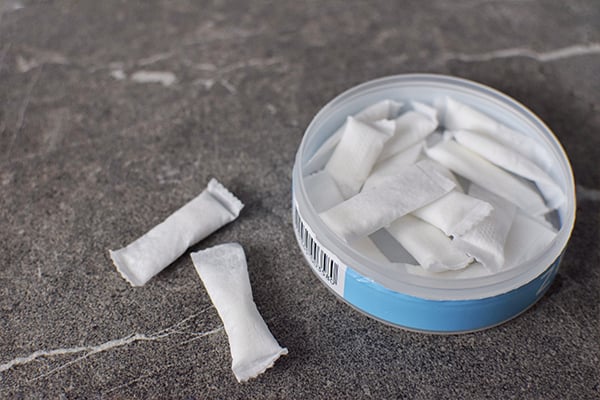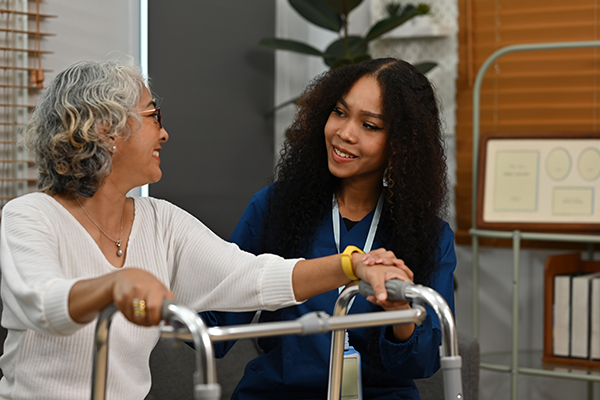Building healthy habits can make a big difference in our well-being, and it’s easy to get started! Make small changes to feel better today—and create a foundation for long-term health and happiness.
Read on for ideas on how you and your students can energize your body and mind with intentional actions every day. Download our free poster created for Middle School students and hang it up as a reminder to invest in yourself by building healthy habits. Use this poster for High School classrooms.
1. Recharge with Sleep
Sleep enhances learning, supports growth and development, increases productivity, helps fight infections, and promotes emotional well-being. Here are suggestions for ways to get a good night’s sleep:
- Establish a bedtime ritual to wind down at the end of the day.
- Do some light stretching before climbing into bed.
- Create a sleep schedule and stick to it, even on weekends.
- Lower the temperature; studies show it’s easier to sleep in a cooler room.
- Do not bring electronics into bed with you and stop staring at screens an hour before bedtime.

Give it a try! Try going to bed at 10 pm and waking up at 6 am for one week, or adjust those times based on your personal schedule. Aim for at least 8 hours of sleep per night.
2. Stay Active
Physical activity lowers the risk of disease, strengthens bones and muscles, improves sleep, lifts your mood, and improves self-esteem and confidence.
Other benefits of physical activity on mental health:
- Improves your brain’s performance. Regular physical activity can keep your memory sharp and boosts creative and mental energy.
- Increases your heart rate, which increases the brain’s production of chemicals that improve your mood and help reduce stress levels.
- Reduces symptoms of anxiety and depression and increases endorphin levels.
- Helps you get a good night's sleep by regulating your circadian rhythm and increasing your body temperature, which calms your mind.
- Strengthens your relationships with others when you do physical activity together.
Give it a try! Go for a 30-minute walk during your lunch hour three times next week.
3. Be Present with Friends
Healthy friendships provide emotional and social support and companionship. To build healthy friendships, make time for friends, meet with them face-to-face, and contribute to the friendship.
To be physically present with friends, give your friends your undivided attention, listen to what they have to say, and respond. Constantly checking your phone when with friends can make them feel ignored. Even having a phone near you can distract you from spending time with friends.

Give it a try! Invite a friend for coffee this weekend; when you’re together, put phones where you can’t see them.
4. Develop a Growth Mindset
One way to manage negative emotions is to change your mindset. A person's mindset, or thought pattern, influences how they respond to different situations. Some people have a fixed mindset. They believe their current feelings will not change no matter what. Other people have a growth mindset. They believe that change is possible.
Some strategies to develop a growth mindset include embracing new challenges, learning from other successes, asking questions, and seeing failure as a learning opportunity.

Give it a try! Choose a new recipe for dinner or a new sport for exercise.
5. Learn to Say No
Learning to say no is an important aspect of refusal skills. Refusal skills are a set of skills designed to help avoid participating in risky behaviors. Some ways of saying no include saying how you feel, suggesting something else to do, and being prepared to walk away. It is also valuable to practice saying “No, I don't want to” without giving any reason, which is also OK.
Give it a try! Politely decline a request that you truly do not have time to honor.
By building these habits, you’re taking charge of your health, happiness, and future. Small steps everyday lead to big results over time—so start now and energize your life!
What simple habits will you build today?
_____________________________________________________________________________
The source for all information is the G-W Health Skills program. If you’re looking for content like this to add to your Middle or High School Health courses, learn more at www.g-w.com/health-pe. Free Previews are available here!
Be sure to visit our Tools for Educators page for more helpful, skills-based health ed resources you can download and share with students.





